Curious About When The hot Air Balloon Was Invented And Who Built the First Hot Air Balloon?
The history of ballooning is a fascinating one. It includes Benjamin Franklin, a couple of french paper makers, and a couple of barnyard animals. After many repeated experiments during more than 20 centuries, the secret of aerial navigation was discovered toward the end of the 18th century in 1782 when Stephen (Jacques-Etienne Montgolfier) and Joseph Montgolfier made their ingenious aerostatic experiment. Smoke from fire hovered over Parisian rooftops for hours before it ascended into clouds – this inspiration that led to an invention that changed our world forever!
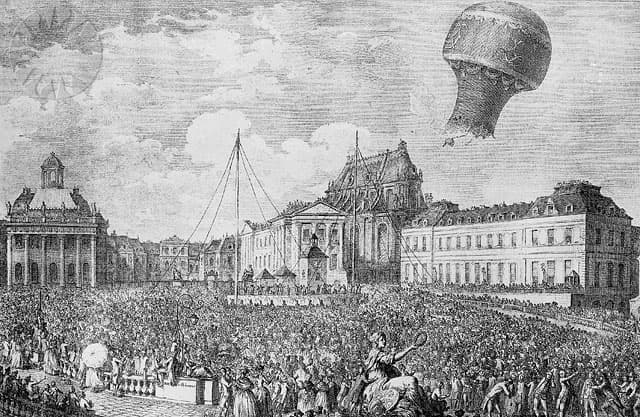
The first hot air balloon flight tests
The younger brother Stephen realized that if a light paper bag were to be made and filled with smoke or ash from their fire, then it would naturally rise up towards the sky. In November of 1782, in Avignon, the Montgolfier brothers built a light paper bag in an oblong shape with approximately 40 cubic feet of capacity and used it to test their experiment.
The paper bag had an opening at the bottom, and when they applied fire beneath it, the internal temperature increased, causing it to rise. Their first balloon experiment rose to a height of 75 feet. Encouraged by their success, the Montgolfier brothers made their next experiment on a much larger scale. Their new envelope was 600 cubic feet in capacity and in a spherical shape. The shape of the envelope was designed after a large short-necked glass bottle used in chemistry called a “Balloon.” When the heat was applied to the opening of the paper balloon, its strings broke and ascended to 600 feet above the ground.
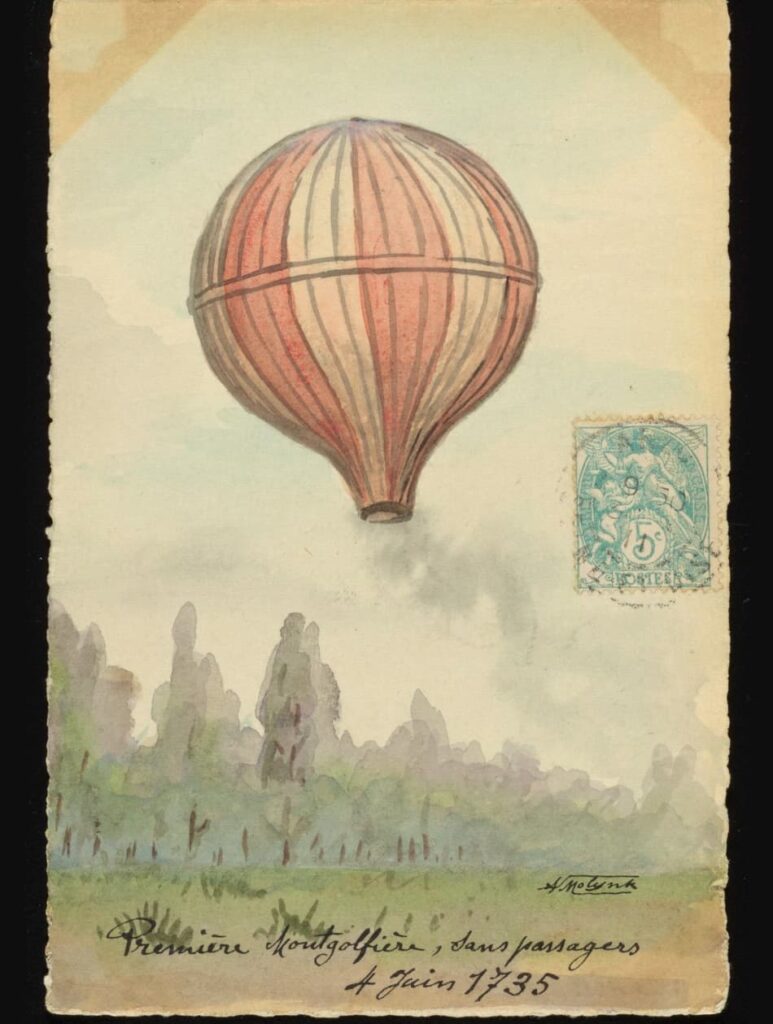
The Montgolfiers were natives of Annonay and were the sons of a wealthy paper manufacturer who had retired from business and left it in their hands. From the history that is afforded of them, it appears that they were both attached to the study of mathematical science; but it seems they were not exactly acquainted with the true nature of the substance that caused the ascent of their balloons. They attributed the ascending power to a peculiar kind of gas that was emitted by the combustion of chopped straw and wool mixed together. This, however, does not in the least detract from the merit of their discovery.
The success of larger hot air balloons gave Motgolflier brothers the confidence to build a very larger balloon. This time the hot air balloon was 35 feet in diameter. On April 3rd, 1783, the balloon, after being filled and released, reached a height of 1000 feet and covered a distance of 3/4 of a mile. It was time for the Montgolfiers to show off their invention to the public. They built a spherical paper balloon with nearly 23k cubic feet and had a lifting capacity of 500lbs. The hot air balloon was released from its tether ropes and ascended to an astonishing 6000 feet above France.
Soon after the experiment had been made at Annonay, Stephen Montgolfier arrived in pairs. He was immediately invited to attend the sitting royal academy of science and, by that body, requested to repeat his experiment at their expense. He cheerfully accepted the proposition and soon constructed a large balloon of elliptical shape 72 feet high and 41 feet in diameter. When completed, it was found to weigh 1000lbs. It was finished and decorated in a most magnificent style, elegantly ornamented over its outer surface with beautiful and appropriate designs. In a preliminary experiment, it raised 8 men off the ground.
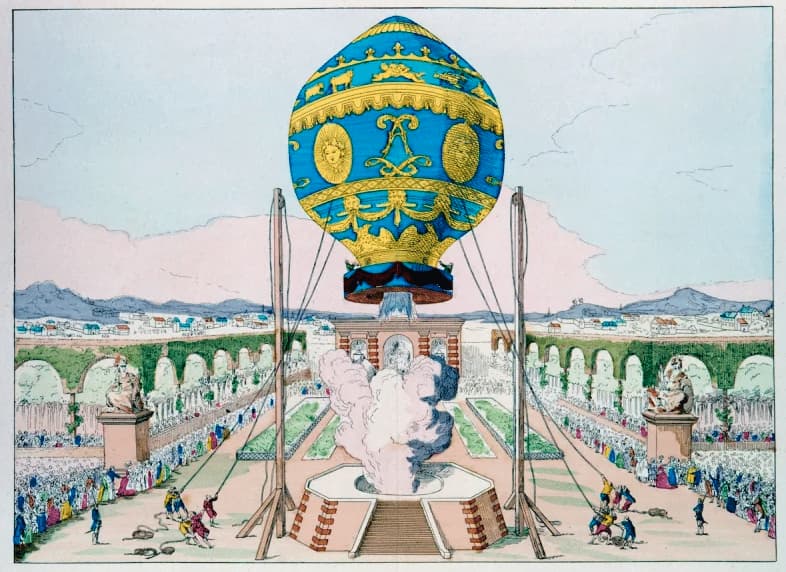
First Hot Air Balloon Ride
On the 12th day of September 1783, the day appointed for the first balloon flight exhibition before the members of the Royal Academy ascended with a load from 400-500lbs. Unfortunately, due to high winds, there was a violent gust of wind damaging the balloon. A new hot air balloon was ordered to be built in the same dimensions. The new balloon included a basket of wicker-work and was inflated in the presence of king Louis XVI and the royal family in Versailles. The French king suggested a sheep, a duck, and a rooster to be placed in the basket as the first hot air ballooning passengers. With these three living animal passengers, the balloon was launched into the upper air and reached an altitude of 1500 feet. The animals landed safely at a distance of 10,000 feet from the place of the ascent. The first official balloon flight was a success.

First Manned Flight
This was the first experiment in which any living creature ascended with a balloon envelope. Another was now constructed which was 74 feet high and 48 feet in diameter. With this large balloon, M. Pllatre de Rozier volunteered to make an aerial voyage. The hot air balloon had an opening at the bottom end 15 feet in diameter. Around the opening was arranged and fastened a gallery of wicker work three feet broad, and around the outer edge of this was a balustrade of the same material three feet high, and around the lower circumference of the balloon, and immediately above the gallery platform, port-holes were worked in it for the purpose of introducing fuel to the burner unit.
The lower aperture of the balloon was suspended by chains to an iron brasier intended for the onboard heat source (fireplace). This meant the aeronaut could easily introduce fuel from the portholes as necessity required it. With this balloon, Jean-Francois Pilatre de Rozier made several ascents to the height of two or three hundred feet with M. Girond de Vilette., while it was fastened with ropes of that length.
On the 21st of November, he, in company with the marquis d’Arlandes. concluded that they would make an aerial voyage. Accordingly, the balloon was inflated, and the gallery was supplied with fuel. M. Pilatre de Rozier and the marquis d’Arlandes stationed themselves on opposite sides of the basket.
At a given signal, the balloon was released from its moorings and left free in the air. It rose majestically amidst the shouts and applause of a delighted multitude until it reached a height of 3000 feet. The parties remained in the air for 25 minutes and encountered various currents of wind and changes in air temperature. During the hot air ballooning experience, there were several times in imminent danger by the balloon catching fire. The marquis became greatly agitated by this and desired to make a precipitate descent. Luckily M. Pilatre de Rozier was prepared and had brought along a sponge and bucket of water for an emergency. They raised and lowered their altitude multiple times in the atmosphere by regulating the fire in the brasier. They finally landed safely 5 miles from where they started after having sailed over a great portion of Paris.
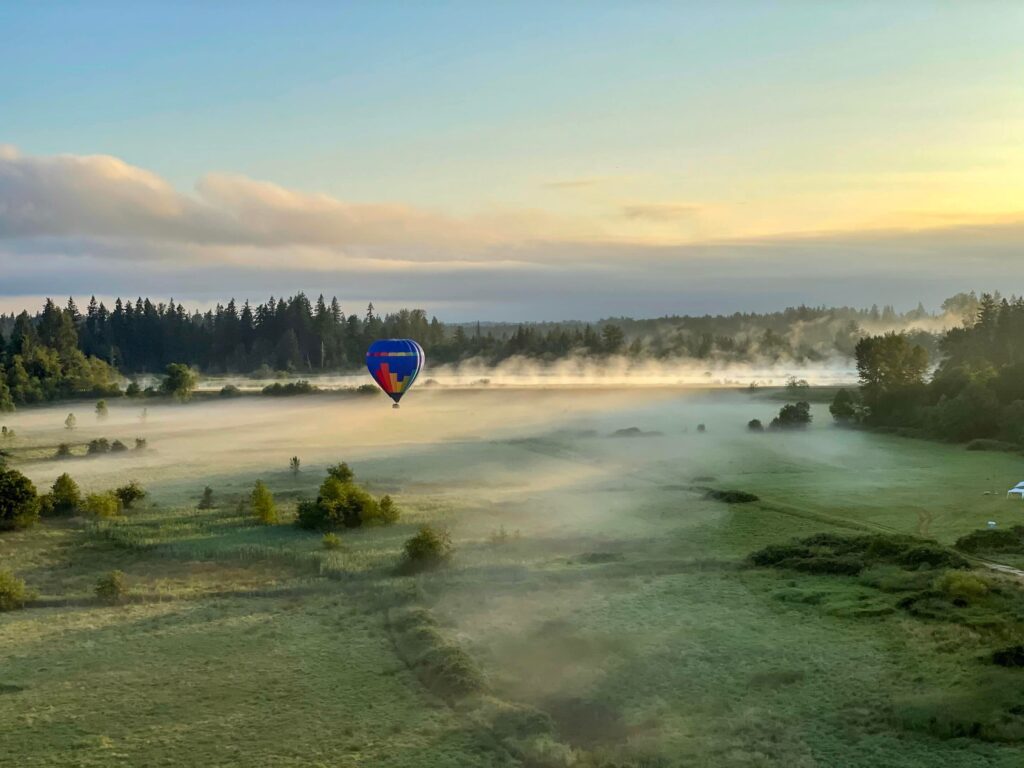
The original documentary account of the first hot air balloon flight was witnessed and given by none other than Benjamin Franklin. Given at the chateau of La Muette at five in the afternoon. Signed, Duc de Polignac, Duc de Guisnes, Compte de Polastron, Compte de Vaudreuil, Benjamin Franklin, Faujus de St. Fond, Delisle, Leroy, of the Academy of Sciences.
“Today, November 21st, 1783, at the Chateau de la Muette, took place an experiment with the aerostatic machine of M. de Montgolfier. The sky was partly clouded; wind north-west. At eight minutes afternoon, a mortar gave notice that the machine was about to be filled. In eight minutes, notwithstanding the wind, it was ready to set off, the marquis d’Arlandes and M. Pilatre de Rozier being in the car. I was at first intended to retain the machine a while with the ropes, to judge what weight it would bear and see that all was right. But the wind prevented it from rising vertically, and directed it toward one of the garden walls; the roped made several rents in it, one being six feet long. It was brought down again, and in two hours was set right. Having been filled again, it set off at fifty-four minutes past one, carrying the same persons. It rose in the most majestic manner and when it was about 270 feet high, the intrepid voyagers took off their hats and saluted the spectators. No one could help feeling a mingled sentiment of fear and admiration. the voyagers were soon indistinguishable; but the machine, hovering on the horizon, and displaying the most beautiful figure, rose at least 3000 feet high, and remained visible all the time. It crossed the Seine, below the barrier of La Conference, valides, was in view of all of Paris. The voyagers, satisfied with their experiment, and not wishing to travel farther, agreed to descend; but seeing that the wind was carrying them upon the houses of the Rue de Seve, Faub. St. Germin, they preserved their presence of mind, increased the fire, and continued their course through the air till they crossed Paris. They then descended quietly on the plain beyond the New Boulevard, opposite the mill of Croulebarbe, without having felt the slightest inconvenience, and having in the car two-thirds of their fuel. They could then, if they had wished, have gone three times as far as they did go, which was 5000 toises, done in from twenty to twenty-five minutes. The machine was 75 feet hight and fifty six feet in diameter; it contained 60,000 cubic feet, and carried a weight of 1600-1700 pounds.”
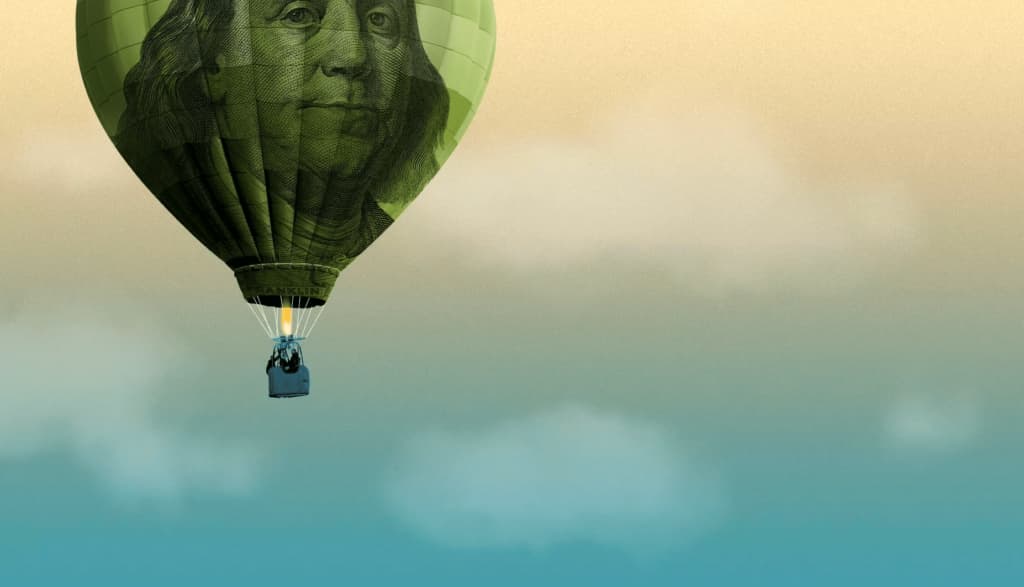
Although the Chinese had experimented with an airborne lantern for thousands of years, there is no proof that a human ever made an ascent. The first aerial voyages in hot air balloons with authenticated proof of flying human beings are the Montgolfier balloons. All true hot air ballooning historians must point to the Montgolfier Balloon as the first practical and fully successful experiment in navigating the air.
At the next meeting of the Royal Academy of Arts and Sciences of Paris, the eminent body voted Stephen Montgolfier a gold medal for having made the most important discovery of the period. The Montgolfiers did not exactly understand the cause or nature of the material that gave ascensive power to their balloons. They attributed the balloons’ ascension not to a rarified state of air but to a peculiar gas that involved burning straw and wool. They termed these “certain materials.” It was the want for a better name that the name given was “Montgolfier gas.” It fooled a few members of the Royal Academy into believing that a new lighter-than-air gas other than hydrogen or helium had been discovered.
Gas Balloons
On Dec. 1, 1783, only 10 days after the first manned balloon flight, Jacques Alexandre César Charles and Nicholas Louis Robert launched a balloon using hydrogen gas for lift and sand for ballast. The hydrogen balloon covered a distance of 25 miles and allowed the pilots to stay in the air for 2.5 hours. Hydrogen had been developed by Henry Cavendish in 1776 by combining iron filings and sulphuric acid.
In 1785, Pilatre de Rozier and Romain attempted to cross the English Channel in a combined balloon using hydrogen and heat. Unfortunately, this volatile mixture of highly flammable hydrogen with fire caused both men’s deaths thirty minutes after liftoff! In 1874 Jean Pierre Blanchard successfully flew across the English channel using hydrogen.
Ballooning made major advances through scientists and because of war. Gas balloons were used by the french as lookouts and were often called the spies of the sky. They were attached to 500ft tether lines and allowed soldiers to document their enemies’ locations and numbers.
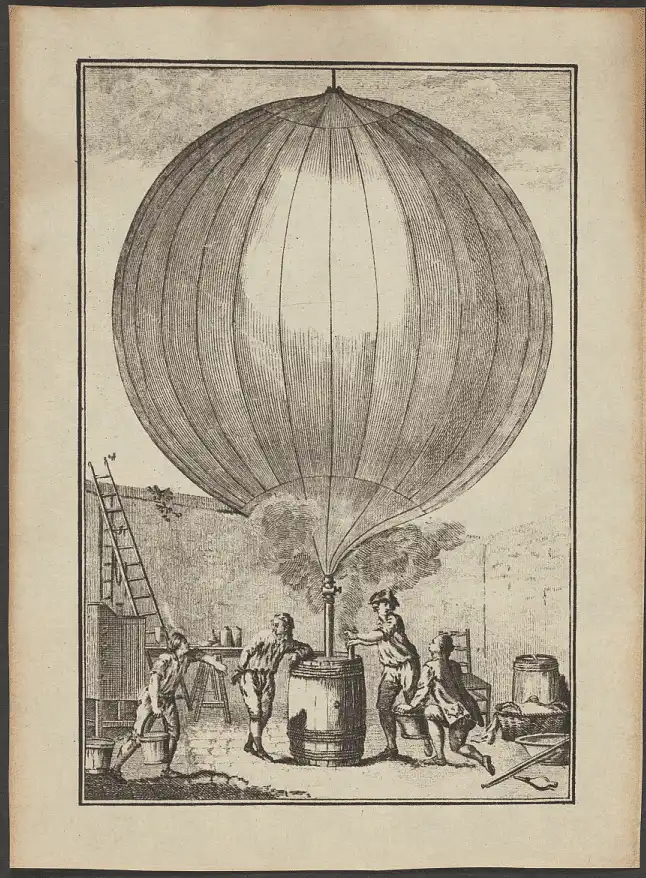
First American Balloon Flight
The first manned balloon flight in America occurred on January 9, 1793. It was driven by hydrogen gas and piloted by John Jeffries and Jean-Pierre Blanchard. Blanchard had crossed the English Channel just one year earlier! President George Washington attended this “first free flight” and watched from the ground. The French military officer ascended 5800 feet from the Philadelphia Prison yard and safely landed the gas balloon on Gloucester County soil near New Jersey’s coastline.
Civil War and Balloons
It wasn’t until the civil war that the United States commissioned balloons and pilots to be used in war. Thadeus Lowe, who owned a commercial balloon ride company, noticed the clouds moving very quickly and believed that if he built a large enough balloon, he would be able to fly from America to England. Since he didn’t have enough money for the expedition, he chatted with President Abraham Lincoln about using his balloons to help the North win the Civil War. Thadeus Lowe inflated his balloon on the White House lawn and attached a 500ft tether line along with a telegraph line into the White House press office. Thadeus ascended his huge balloon to 500 feet and sent the first telegram from the air! Lincoln said,” We are going to win the war with balloons.” During the civil war, the 10 commissioned balloons called the balloon corps ascended over 3000 times. In 1862 Union General Fitz John Porter had an unexpected experience in a balloon. The tether lines broke, and he flew over enemy lines. Luckily the winds changed, and the balloon landed not far from where it had originally taken off. It was quite an adventure!
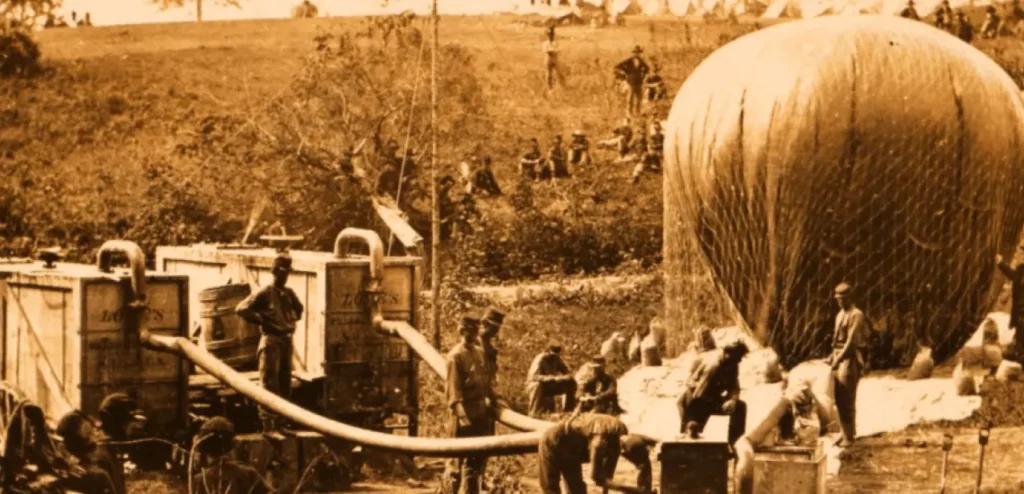
Japanese Fugo Balloons Used In WWII
During World WarII the Japanese developed bomb-carrying balloons designed to cross the Pacific and attack the United States. Called Fugo (wind ship) balloons, many reached the US, a few caused occasional fires and one killed six people in eastern Oregon in 1945.
The Fugo balloons were large, reaching up to 30 feet in diameter, and were filled with hydrogen. They carried incendiary and high explosive bombs, as well as anti-personnel bombs designed to release small bomblets over a wide area. The Japanese released the balloons from sites in Japan, and they were carried across the Pacific by the Jet Stream.
The balloons were designed to start fires in forests in the Pacific Northwest, as well as to kill and injure people. Some of the bomblets carried by the balloons exploded on impact, while others were designed to start fires. In total, it is estimated that 9,300 Fugo balloons were launched between November 1944 and April 1945.
Of the 9,300 balloons that were launched, it is believed that only a few hundred reached the continental United States. Most of the balloons landed in remote areas, and most bombs did not detonate. However, a few dozen fires were started by the balloons, and six people were killed by a bomb that exploded near Bly, Oregon, in May 1945.
Despite the small number of balloons that reached the US, the Fugo balloon campaign caused a great deal of anxiety and fear among the American population. The balloons were a reminder that the Japanese were willing and able to attack the United States, even though it was more than 2,000 miles from Japan. The fact that the balloons were able to cross the Pacific also showed that the jet stream could be used as a weapon, something that was of great concern to the US military.
The Fugo balloon campaign was just one of many attempts by the Japanese to attack the United States during World War II. Other campaigns included the launch of small boats filled with explosives, as well as attempts to use submarines to attack cities on the west coast. None of these campaigns were particularly successful, but they showed that the Japanese were willing to go to great lengths to try and defeat the United States.
The Fugo balloon campaign is an example of how, even amid a world war, nations still tried to find new and innovative ways to attack their enemies. The fact that the Japanese were willing to launch thousands of balloons across the Pacific shows how determined they were to win the war. The campaign also highlights the importance of technological innovation, as the Japanese were able to use the jet stream to their advantage. In the end, however, the campaign was not particularly successful, and it did not have a significant impact on the course of the war.
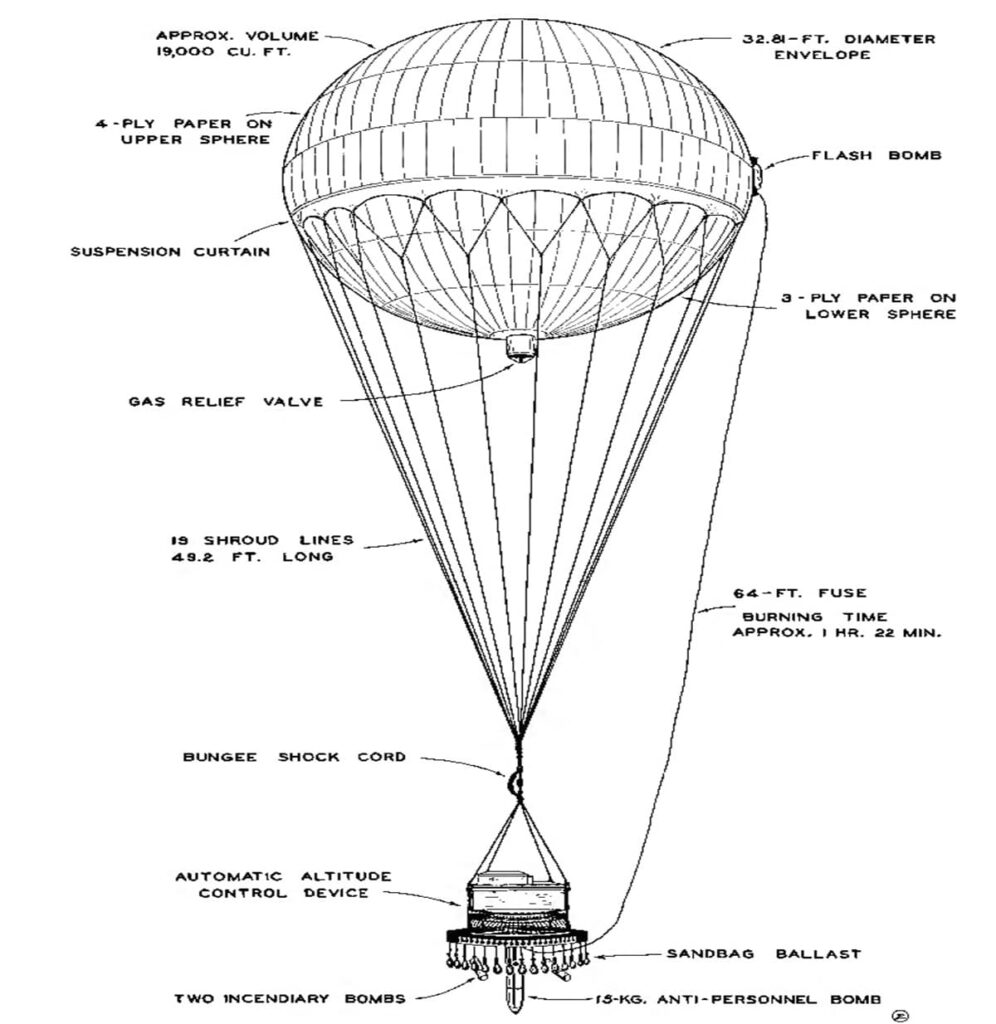
High Altitude Balloon Flights
A few high-altitude balloon flights in the 19th Century eventually led to modern scientific exploration of the upper atmosphere in the 1930s. As both military aircraft and passenger airplanes flew at ever higher altitudes, more needed to be learned about the conditions they encountered and how to provide oxygen systems and other crew and passenger support and safety systems.
Swiss physicist and inventor Auguste Piccard was the first to fly above 50,000 feet in 1931. At this altitude, the beginning of the stratosphere and essentially the transition from the earth’s atmosphere to space, a person would die in a few seconds without oxygen and a pressurized environment. Piccard invented a pressurized aluminum sphere that contained a system to supply oxygen to the crew under regular atmospheric pressure. Piccard invited his friend Max Cosyns to join him on this adventurous flight to the stratosphere in a hydrogen gas balloon. The balloon broke a new altitude record reaching a height of 52,000 feet. It wasn’t until 1935 that Captain Albert Stevens and Orvil Anderson set a hard-to-beat record. The Explorer II (their helium balloon) reached a height of 13.7 miles above the earth. This record was held for 20 years. These early stratospheric flights paved the way for space travel.
The United States Navy launched a program in August 1934 to explore the stratosphere using flight balloons. This became known as the Explorer program and was initially funded by the National Geographic Society but eventually taken over by the Navy. Using Piccard’s designs, they constructed a pressurized gondola that enabled people to remain at high altitudes for long periods of time.
Army Captains Albert Stevens and Orvil Anderson reached a height of 72,395 feet in the balloon Explorer II in 1935 on a flight from the Stratobowl in South Dakota. This was the highest altitude reached by anyone before World War II. The information gathered and crew experience during these high-altitude balloon flights in the 1930s were put to good use during the war, improving both equipment and procedures. Combat planes routinely flew above 25,000 feet, and some were capable of attaining 40,000 feet or more.
Thin, mass-produced polyethylene sheeting became available in 1944 and replaced the much heavier and more costly cloth fabrics of earlier balloons. This created a renaissance in military and scientific ballooning
After World War II ended in 1945, amazing changes took place in all of aviation. Airplanes flew higher and faster, jet-powered airplanes and rockets were all the rage, and the world entered the space age.
The Explorer program made a number of important discoveries related to weather, cosmic radiation, and the upper atmosphere. Data and findings from these flights led to improved air safety regulations, aircraft design requirements, and even space exploration technology. The U.S., British, French, German, Japanese, and Soviet governments all sponsored stratosphere research flights, which helped lead to the development of space exploration and the eventual race to land a human on the moon.
Today, high-altitude balloons are still used for scientific research. Researchers use them to study particle physics, cosmic radiation, and atmospheric phenomena like thunderstorms and air pollution. Their success over the years has shown that the upper atmosphere can be explored and understood, opening the door for even more ambitious space exploration. High-altitude balloons provide a safe, reliable way of exploring the edge of outer space without ever leaving Earth’s atmosphere. They have been an invaluable tool in helping to unlock the mysteries of our universe.
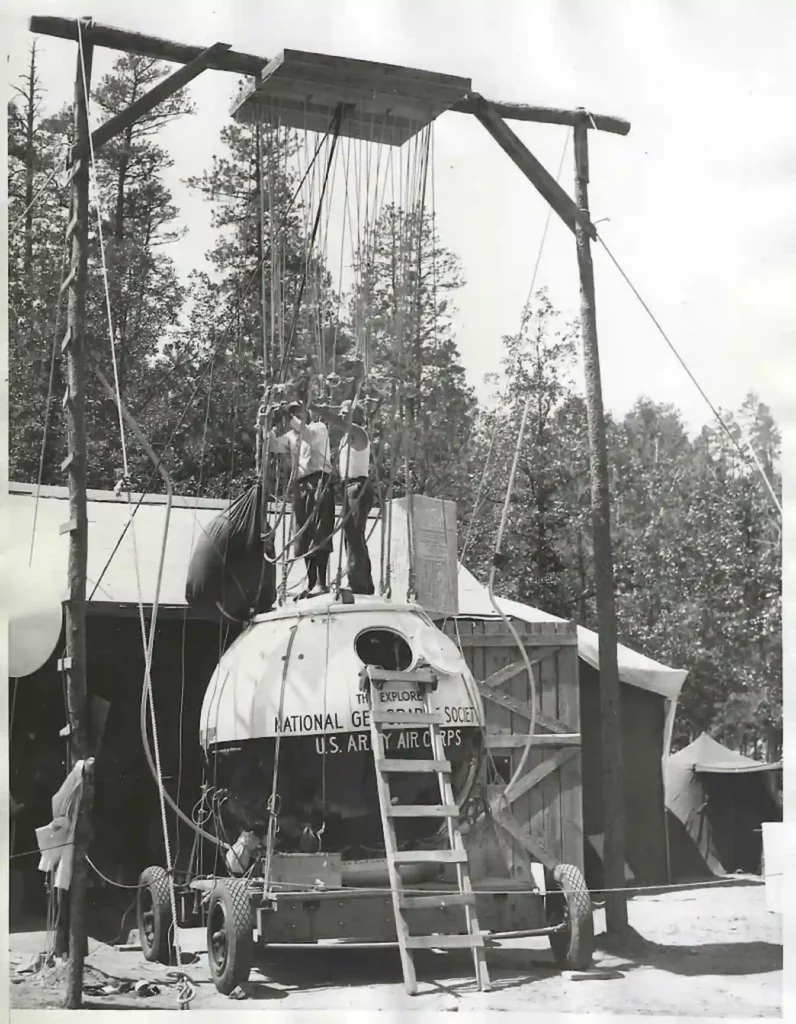
The Reinvention of the Hot Air Balloon
Josef Emmer was a true master of the skies, known for his proficiency as both a balloonist and glider pilot. Born on April 14, 1912, he grew up alongside his schoolmate and fellow aviation enthusiast, Bruno Marek. Together, they made history by establishing a record that still stands today in the FAI archives. But Emmer’s greatest accomplishment was being the first person to use propane as a heat source for balloons, paving the way for future advancements in the field.
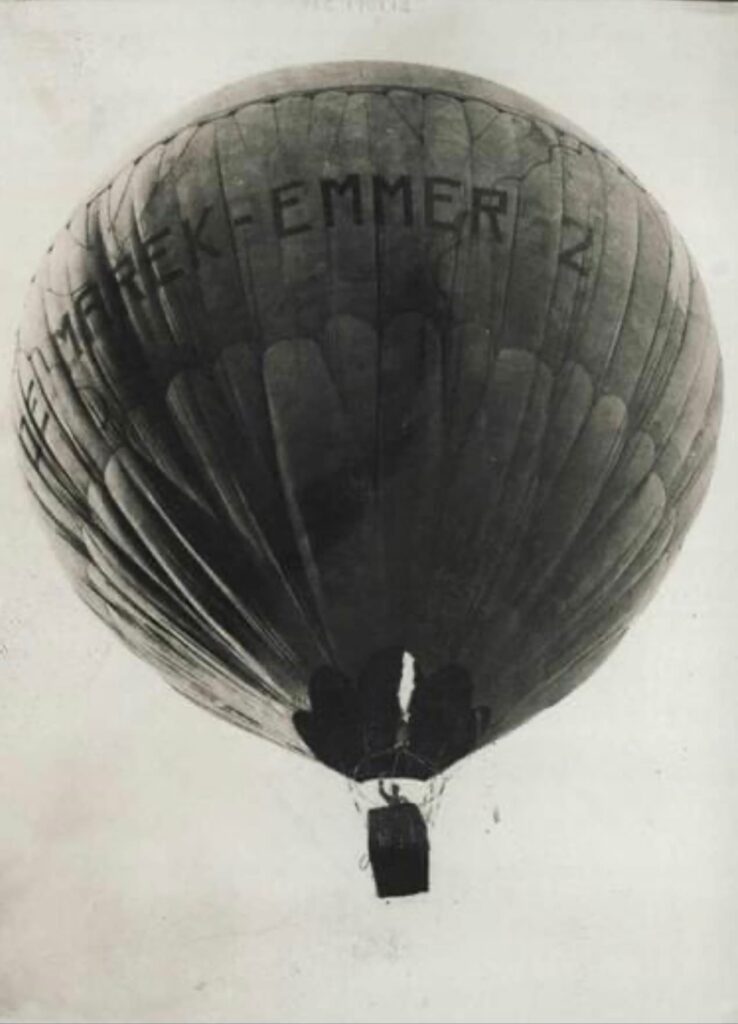
His two epic flights are still talked about today, particularly the one on October 7, 1935, with Bruno Marek. They flew a co-designed hot-air balloon with a capacity of 63,600 cubic feet, powered by a pressurized petroleum burner, reaching new heights and leaving onlookers in awe. But it was Emmer’s solo flight on September 25, 1939, that cemented his legacy in the annals of ballooning history. He designed and built the hot-air balloon himself, using pressurized petroleum fuel as the heat source. This flight was officially recognized by the FAI as the first record in a hot-air balloon, marking a significant milestone in the history of aviation.
Emmer’s passion and dedication to ballooning have inspired generations and will continue to be remembered as a testament to human ingenuity and the pursuit of adventure.
Following the end of World War II, ballooning enthusiasts were determined to keep the sport alive. Don Piccard, son of famous aeronauts Jean and Jeannette Piccard, made the first sport balloon flight in the United States after World War II. He combined a Japanese Fugo balloon with an old wicker basket, launching from a park in Minneapolis and landing in the countryside east of the city two hours later. This was an exciting development for the sport of ballooning!
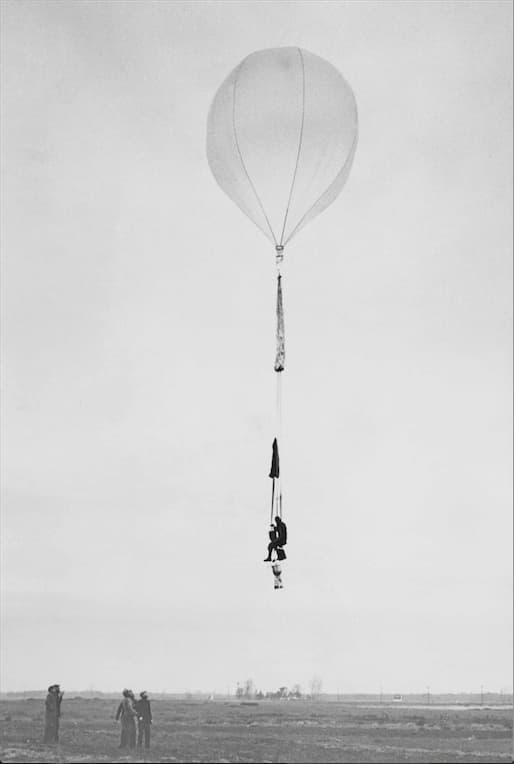
The modern hot air balloon was invented out of the General Mills balloon program was funded by the US government (The Navy). They believed that hot air balloons could be used as an extraction method for soldiers or a spy system with cameras disguised as weather balloons. Ed Yost and Don Piccard both worked on the Navy program at General Mills and went on to build the modern hot air balloon using a propane burner and nylon fabric. Their first flight in the balloon that Ed Yost built was called the channel champ and flew over the English channel. Ed Yost helped build Raven Industries in the early 1960s, and Don Piccard went on to build Piccard balloons.
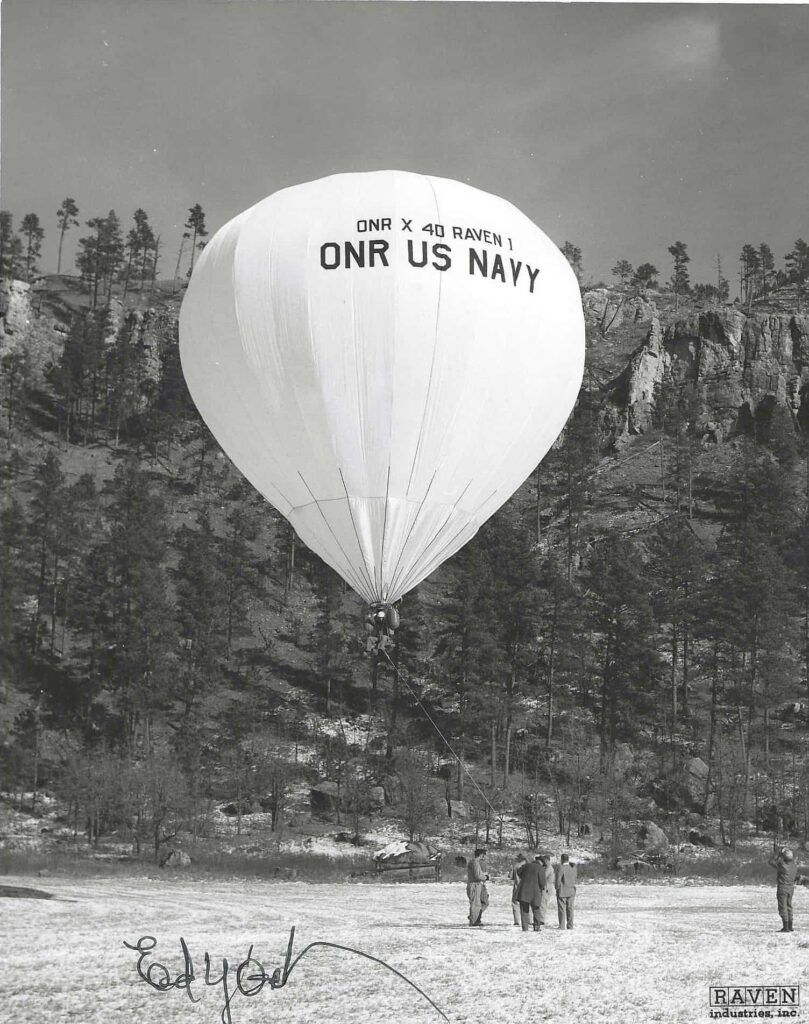
Secret Ballooning Missions
People were spotting high-altitude scientific and military balloons in the 1940s and 1950s all the time, and many of them were reported as flying saucers! These balloons were funded by the CIA through the Navy and often contained expensive instruments that needed to be recovered, so they were tracked by airplanes. But if the chase plane lost track of the balloon, the crew would often find it by asking for and receiving the location of UFO reports.
Roswell Aliens Were Just Balloon Pilots
Ever heard about the Roswell incident? In 1947 one of the project’s from General Mills test balloons landed on remote Foster Ranch about 35 miles northwest of Roswell, New Mexico, setting off the Roswell flying saucer craze that persists to this day. The flying saucer and alien part of this Roswell incident has been debunked many times, but the myth endures.
In November 1946, having great concern about Russia getting an atomic bomb, the Air Force contracted with researchers at New York University to develop high altitude constant level balloons to detect Russian nuclear explosions.
Called project Mogul, it was so secret that even the name Mogul was not known to the launch team until decades later. The task of project Mogul was to develop these balloons, and then equip them with microphones in order to detect Russian nuclear explosions.
Among the NYU balloon team were two graduate students, project engineer Charles B. Moore, and James Richard Smith, a future founder of Raven.
In June 1947, members of the NYU balloon team, including Moore and Smith, launched several balloon trains from Alamagordo Army Air Field in New Mexico. These trains included standard weather balloons, as polyethylene balloons were still a few months away from being available. Radar reflectors, ballast and a dummy payload were included in the first of these balloon trains. The early flights were designed to test out balloon systems and radar tracking, prior to the introduction of polyethylene balloons with microphone payloads.
On June 4, 1947, flight #4 was launched. The ground based tracking radar lost the balloon, and the B-17 tracking aircraft lost telemetry contact, and so broke off the chase. However J.R. Smith visually tracked the balloon using a theodolite all the way to Arabela, just east of Capitan Peak, about 75 miles northeast of Alamagordo.
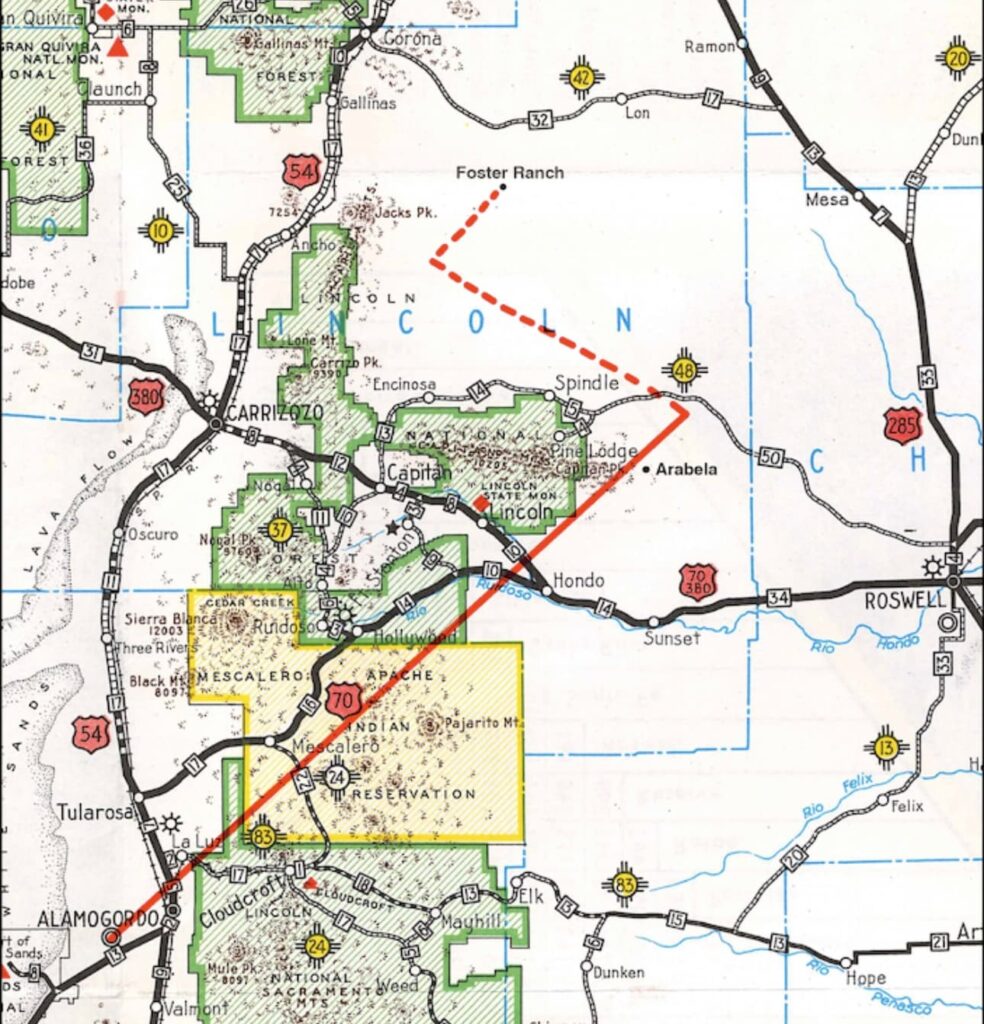
In 1995 Moore, then a scientist at the Langmuir Laboratory for Atmospheric Research in Socorro, used the visual tracking data, detailed flight data from the balloon flights of June 5th and 6th, and weather data from US Weather Bureau winds aloft maps from June 1947 to recreate the probable course of flight #4, as shown on the map. Moore concluded that it was the balloon train from flight #4 came to ground on the Foster Ranch northwest of Roswell. The debris found and illustrated in local papers at the time are consistent with a balloon train with radar reflectors.
The classified aspect of project Mogul created confusion in reporting and statements issued by the Air Force to the press. This author is taking no sides in discussions of whether or not UFOs are real. The point here is that what was found on the Foster Ranch in July of 1947 was almost certainly some of the remains of NYU flight #4.
CIA Balloon Project Mongoose
One of the most exciting uses of balloons was the 1960 CIA attempt to overthrow Fidel Castro in Cuba. The plan, code-named Operation Mongoose, involved launching balloons carrying explosives from Florida and having them drift over Cuba, where they would be detonated by remote control. The idea was that the explosions would create enough fear and chaos that the Cuban people would overthrow Castro. The plan was never carried out, as the Cuban Missile Crisis occurred 10 days after the plan was activated. It does, however, show the creative thinking that went into using balloons for covert operations.
Fidel Castro took over Cuba in January 1951 and installed a Communist regime. Cubans in the United States and wanted to recover their country so with the help of the Central Intelligence Agency a plan was hatched to retake the island in April 1961. President Kennedy once said that on his inauguration day Eisenhower warned him to avoid the hair-brained CIA scheme, but he ignored the suggestion. The invasion took place, and although the U.S. claimed no nationals were involved, U.S. Navy personnel told me that they took Cuban troops right up to the beach in landing craft.
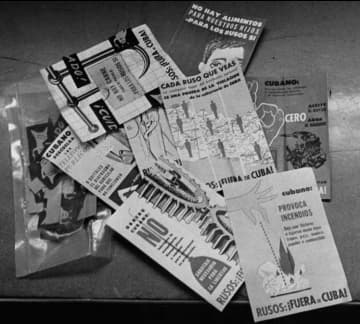
We do know that on 17 September 1962 a secret memorandum was sent to General Lansdale on the subject of a request for approval to start a propaganda balloon campaign against Cuba as part of Operation Mongoose. Helium inflated balloons were to be flown from a foreign-flag ship located at least 10 miles from Cuba in international waters. To protect U.S. involvement the ship would be chartered by a Cuban exile that was well known and acceptable to the Cuban anti-Castro exiles. The sponsor would be put in touch with a “cleared” balloon facility and purchase the balloons. The sponsor would contact the Cuban Revolutionary Council and work with them. Anti-Castro groups could submit propaganda and if found acceptable by the CIA it would be accepted and disseminated by balloon.
Twenty balloons an hour could be launched from a station into the easterly trade winds, each carrying four pounds of leaflets (2,000 to 4,000 leaflets). Four such stations could launch 80 balloons an hour. It was estimated that 2,000,000 to 4,000,000 leaflets a month could be delivered. Another secret CIA document entitled Propaganda Action Plan in Support of Military Forces makes some of the following points:
On D-Day the propaganda campaign will enter its action stage. The two primary propaganda mechanisms will be radio and leaflet operations. In Nicaragua, the operations base for Brigade 2506, 11 million brochures were ready to be dropped over Cuban territory…By the time of the invasion, a total of 12 million pounds of leaflets had been dropped on Cuba. The CIA estimates for the cost of propaganda operations was $500,000 in fiscal year 1960 and $1,200,000 in fiscal year 1961. During the Bay of Pigs the liberation movement used fish symbols. Later, the CIA decided to use the term “worm”
since Castro called all anti-revolutionaries “worms.” A whole propaganda campaign was planned around Gusano Libre (Free Worm) leaflets flown over Cuba by helium balloons from ships sailing close to the island. The CIA produced thousands of leaflets showing a small worm taking part in various sabotage acts. The balloon operation was to be called “Mongoose”.
Secret CIA Balloon Espionage
The US and USSR used balloons to carry out spying and espionage missions against each other. These missions involved launching a balloon from one country and allowing it to drift across the border into the other country, where it would be recovered by agents. The balloons would be carrying either cameras or listening devices, which would be used to gather intelligence. These were often quite dangerous, as the balloons would sometimes be shot down by anti-aircraft guns or intercepted by fighter jets. But that didn’t stop the brave men and women who participated in them! The top-secret New York University program Project Mogul, designed to place microphones high in the upper atmosphere under balloons to detect Soviet nuclear explosions, was not a great success. It was too expensive, and better ways were soon found. In 1955, a secret CIA project had a balloon launched from a submarine fly over a Russian island to take photos at 18k feet and was recovered by another submarine.
Advances In Ballooning Technology
Technology in ballooning has made huge advances in the last 20 years. Balloon travel to a specific long-distance location still isn’t available, but, the fabric being used is now airtight, the propane burners are extremely powerful, and the advances in accessible weather information make ballooning very safe. You can learn the specifics about how hot air balloons work on this post. Get ready to nerd out!
Modern Ballooning Technology
Balloon manufacturers have added what is called a parachute vent for quickly cooling the envelope of the balloon. The parachute vent allows a balloon pilot to quickly dump hot air on landing allowing for the basket of the balloon not to be pulled by the momentum of the envelope. The vent can also be used if a balloon pilot over burns causing the hot air balloon to slow its ascent.
Balloon Burners
Hot air balloon manufacturers have built powerful, fuel-efficient propane burners and larger fuel tanks. The original propane burners in the 1960s released 2-3 million BTU. New burners in 2022 release 30 million BTU with each pull. The hot air balloon burners also now have pilot lights that stay lit and ignitors on the burners themselves.
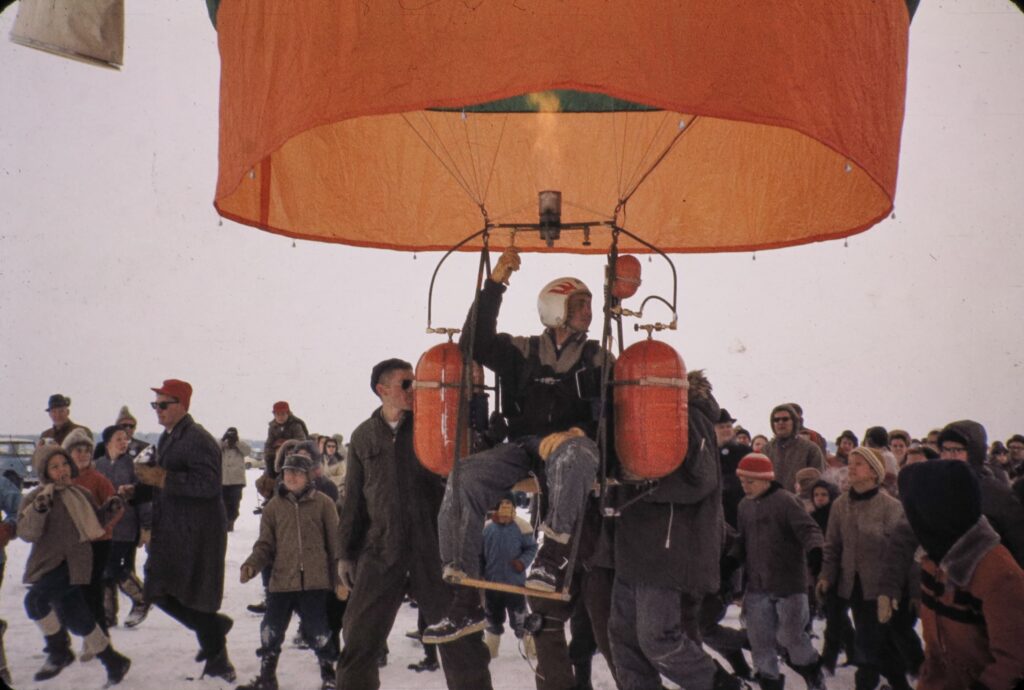
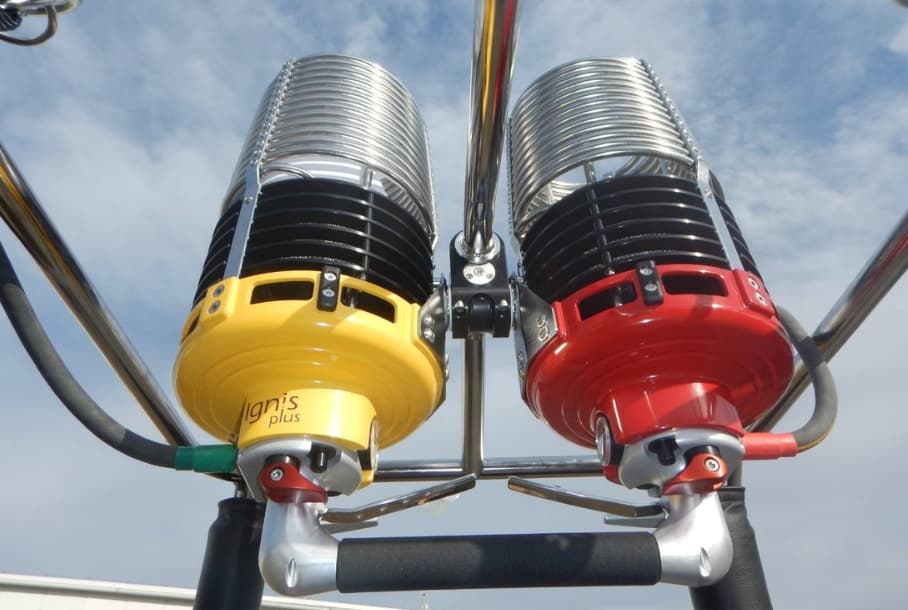
Hot Air Balloon Fabric
The hot air balloon fabric was originally made out of paper or silk. Modern-day hot air balloons use nylon fabric with a special coating that helps the fabric be airtight.
Cost Of Hot Air Balloons
The cost of hot air balloons has seen a significant increase since their early days in the 1960s. Initially, these majestic flying machines could be acquired for just a few thousand dollars, making them a relatively accessible luxury for enthusiasts and adventurers of the time. However, over the decades, advancements in technology, safety features, and materials have contributed to a substantial rise in prices. As of 2024, the average cost of a new hot air balloon system, which includes the envelope, basket, burners, and necessary instruments, hovers around $50,000. This price can vary based on the size of the balloon, the quality of materials used, and the complexity of the design. The increase reflects not just inflation but also the evolution of the balloons into more sophisticated and safer aircraft, catering to a market that demands high standards for recreational and commercial ballooning experiences.
Hot Air Balloon Flights
These days you can see hot air balloons flying all over the world. You can purchase a ride and fly in Napa Valley over the grapevines, in front of Mt. Rainier (an active volcano) in Seattle, fly over the swiss alps, and even join 550 balloons at the Alburquerque balloon festival. Currently, there are around 40 pilots in the world that actively fly hydrogen and over 4000 hot air balloon pilots that use propane burners and the Montgolfier method.
Famous and Noteworthy Balloon Pilots
If you’d like to read some more fascinating ballooning adventures, be sure to check out Finding My Virginity by Sir Richard Branson. He has multiple hot air ballooning and hybrid balloon records for flying across the Pacific, Atlantic, along with his attempts to fly around the world. His transatlantic flight landed him a world record. John Wise’s book through the air from 1783 is a culmination of stories of his 40 years of ballooning adventures. Also, check out Fedor Konyukhov who completed the fastest solo hot air balloon flight around the world. His 33,000km journey won the record-breaking time in the Guinness world record book – just under 11 days.

Special Shape Balloons
Special Shape Hot Air Balloons have been around since the 70s, and today is the most unique way to get awareness for your brand. This Special Shape page talks all about these very neat balloons!
Additional FAQs About Ballooning History
When was hot air ballooning invented?
The hot air balloon was invented in 1783 by Joeseph and Stephen Montgolfier. They built a hot air balloon out of paper which Pilatre De Rozier flew over Paris. Modern-day hot air ballooning using a controlled propane burner and nylon fabric was invented in 1961 by Ed Yost at Raven Industries.
What fuel did the first hot air balloon use?
The first hot air balloon developed by the Montgolfier brothers in 1783 used “Montgolfier Gas” to heat the air temperature in the balloon. The balloon fuel for the fire was a combination of straw and wool. At the time, the Montgolfiers did not know the heat from the fire was causing the hot air balloon to ascend.
Who was the first to fly in a hot air balloon?
The first passengers to fly in a hot air balloon were a rooster, a duck, and a sheep. The hot air balloon lifted them over 1000ft and slowly descended to the ground. The first people to fly in a balloon were Pilatre De Rozier and Marquis d’Arlandes. They spent 25 minutes in the sky in the hot air balloon and crossed over Paris. The first to fly a modern-day hot air balloon was Josef Emmer in Austria in 1935.
How do you steer a hot air balloon?
Hot air balloons do not have a steering wheel and instead use the wind at different altitudes in order to control or steer the hot air balloon horizontally.
Were hot air balloons used in Space?
Yes! Hot air balloons were the first craft to go to the stratosphere!
How high do hot air balloons fly?
Hot air balloons can reach incredible heights! Hot air balloons are limited by airspace, the size of the balloon being used, and the weight onboard. Hot air balloons typically fly under 5000 feet, however many balloon pilots have flown over 30,000 feet.
Chemistry and physics teachers find ballooning fascinating
Want a hot air balloon historian and active balloon pilot to chat with your class about hot air balloons? the first hot air balloon flight, and interesting gas ballooning history? We have multiple pilots at Seattle Ballooning that would be happy to Zoom with your class. Who knows, maybe we’ll inspire some new Aeronauts!
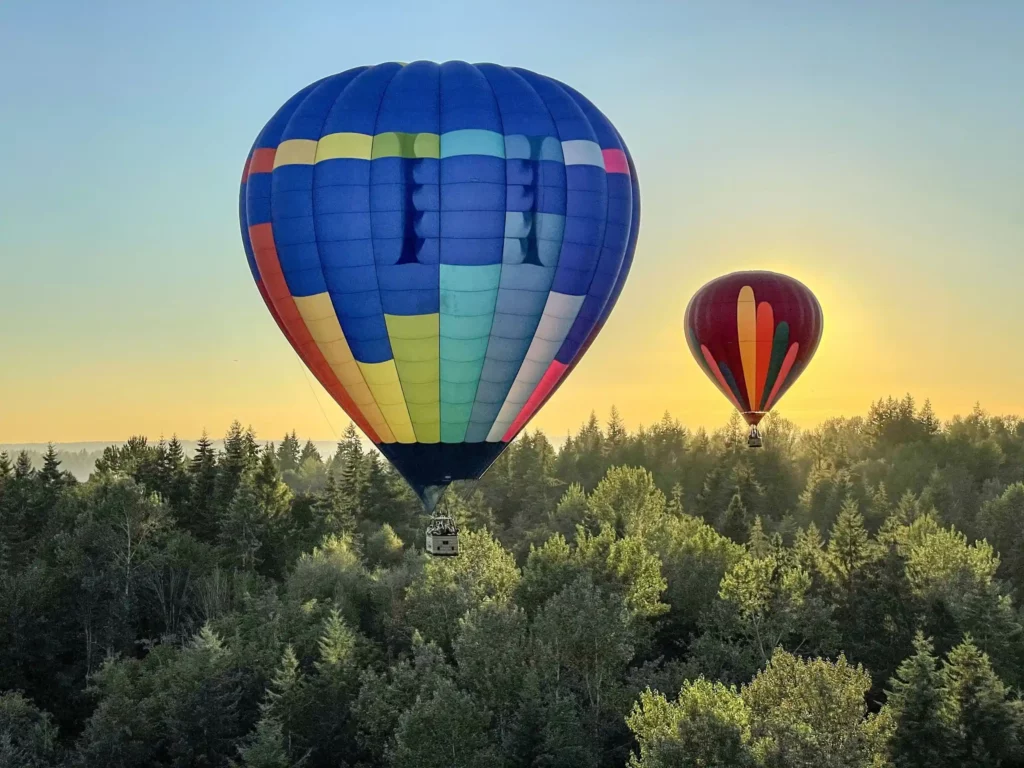
What Is The Most Luxury Multi-Day Tour In The US?
Seattle Ballooning provides exclusive luxury hot air balloon tours across the state of Washington. These tours start at $12k per person and include aged wine, exquisite food, and true adventure.
History Of Hot Air Balloon Advertising
Hot air balloon Advertising has been around since the mid-1960s. Almost every major brand has had a hot air balloon as part of its marketing. You can learn all about the famous billionaires and companies that have relied on balloons to get the word out about their companies!
